What You Need to Know Before Buying an At-Home Glucose Monitor
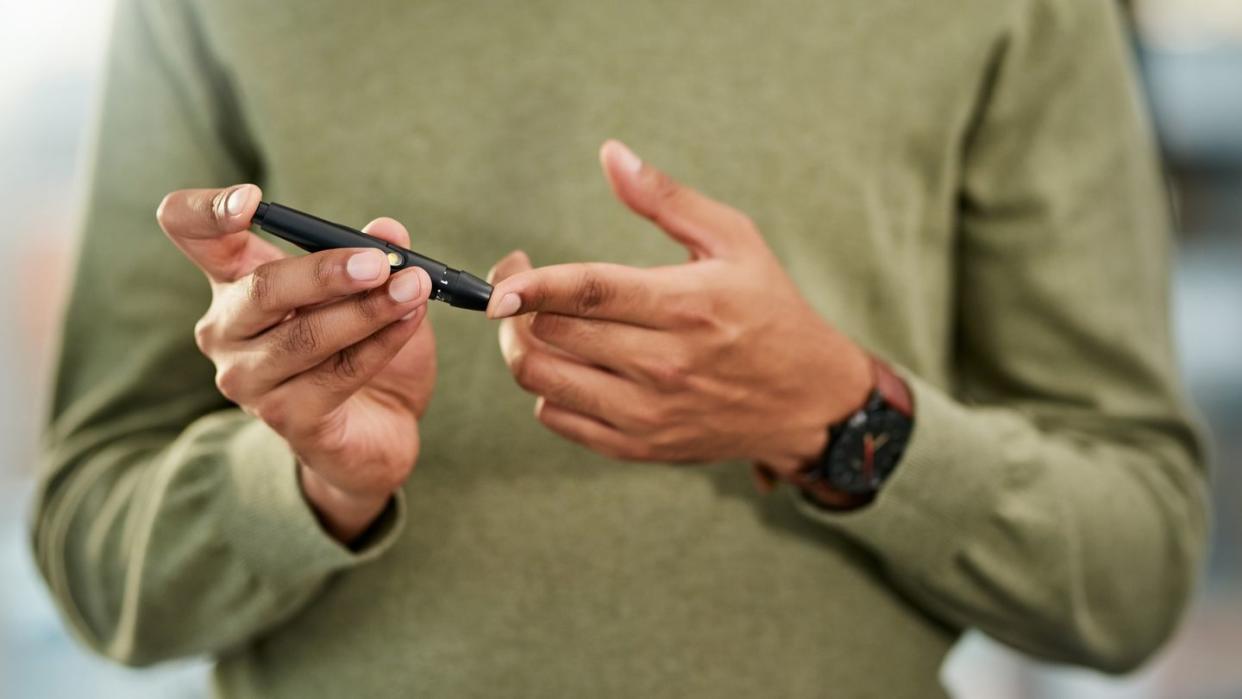
"Hearst Magazines and Yahoo may earn commission or revenue on some items through these links."
For people with prediabetes, type 1 diabetes or type 2 diabetes, monitoring blood glucose levels is a 24/7 operation. If blood glucose drops too low or jumps too high, that can put a person at risk for serious health complications. While most people know food can impact blood sugar levels, so can things like exercise, medications, stress, dehydration and illnesses. That means it’s crucial to take multiple blood glucose readings throughout the day. Then, if you see a reading that’s outside your normal range, you can act quickly to correct it.
The good news is there are lots of different blood glucose monitors to choose from that vary widely in terms of how much they cost and how they work. Theoretically, there’s a glucose meter that will work for everyone. That said, comparing different features and dealing with insurance coverage can be difficult. We turned to two endocrinologists to get their opinions on the best glucose monitors that they recommend to their patients, and we also asked for some tips on how to select the right one for your needs, which you'll see below in our FAQ section.
How we chose glucose meters
To ensure we truly are recommending the best glucose monitors, we consulted with top endocrinologists to see what they suggest to their patients. Beyond that, we read many reviews online and analyzed the details listed on manufacturer websites. Additionally, we carefully considered:
Cost: If you’re paying out of pocket, continuous glucose monitors can be pricey investments. That’s why most people stick with whatever meters are covered by their insurance plans, which are often finger-stick glucometers. While finger-stick glucose meters are more affordable initially, there are additional costs to consider. “The primary concern on the part of the patient is the cost of the strips,” says Kathleen Wyne, M.D., Ph.D., an endocrinologist at The Ohio State University Wexner Medical Center. Sometimes insurance companies will only cover certain brands or a certain number of strips per day or per week. That's why, you'll see a range of prices here, as well as many FSA or HSA eligible.
Brand: For safety, we were advised against suggesting lesser-known brands. “I do not like patients using ‘off brands’ (i.e. store brands) because they generally are less accurate than the branded ones when in daily use,” says Dr. Wyne.
Accessibility: If you have vision issues, you may want a glucometer with a larger display screen, says Dr. Wyne. And if you have dexterity issues, you might want a device with larger parts that are easier to maneuver. We included both options on this list.
G7
“If a patient is utilizing an insulin pump for their diabetes care, the Dexcom 7 is the preferred choice, as it can connect to the pump and optimize blood glucose control,” says Beatrice Hong, M.D., an associate professor of medicine in the Division of Endocrinology at Duke University Medical Center. This continuous glucose monitor is known as being a reliable and accurate way to measure glucose levels. Plus, as the company notes, it’s “the only CGM system to offer a predictive low alert that can recognize potentially dangerous hypo-incidences before they occur.”
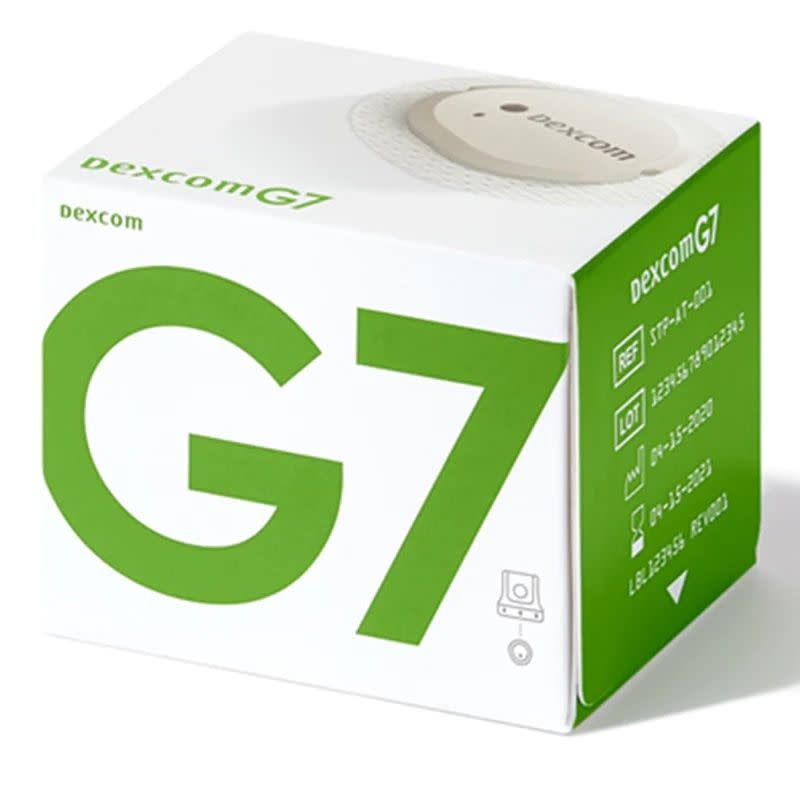
G7
amazon.com
DexcomLibre 3
“If someone is paying out-of-pocket for a continuous glucose monitor, I generally recommend the Freestyle Libre 2 or 3, as it is generally more affordable out of pocket,” says Dr. Hong. Not only that, the manufacturer claims the Freestyle Libre 3 is “the world’s smallest, thinnest and most discreet sensor.” Since it's continuous glucose monitoring system (CGM), it doesn't use blood to measure, but rather the fluid under your skin.
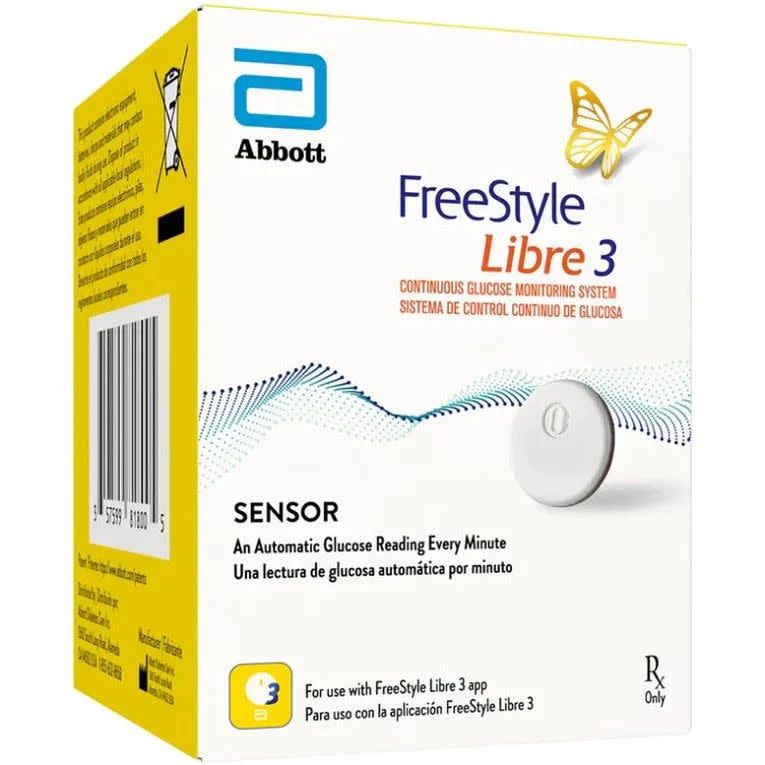
Libre 3
amazon.com
Contour Next One
If you're going to get a finger-stick glucometer, the Contour Next One was one of the ones recommended by Dr. Wyne. It provides fast, accurate readings, and reviewers online say they like how easy the device is to use. One interesting feature of this device is it lets you add more blood to the test trip within 60 seconds, which could prevent you from wasting a test strip.
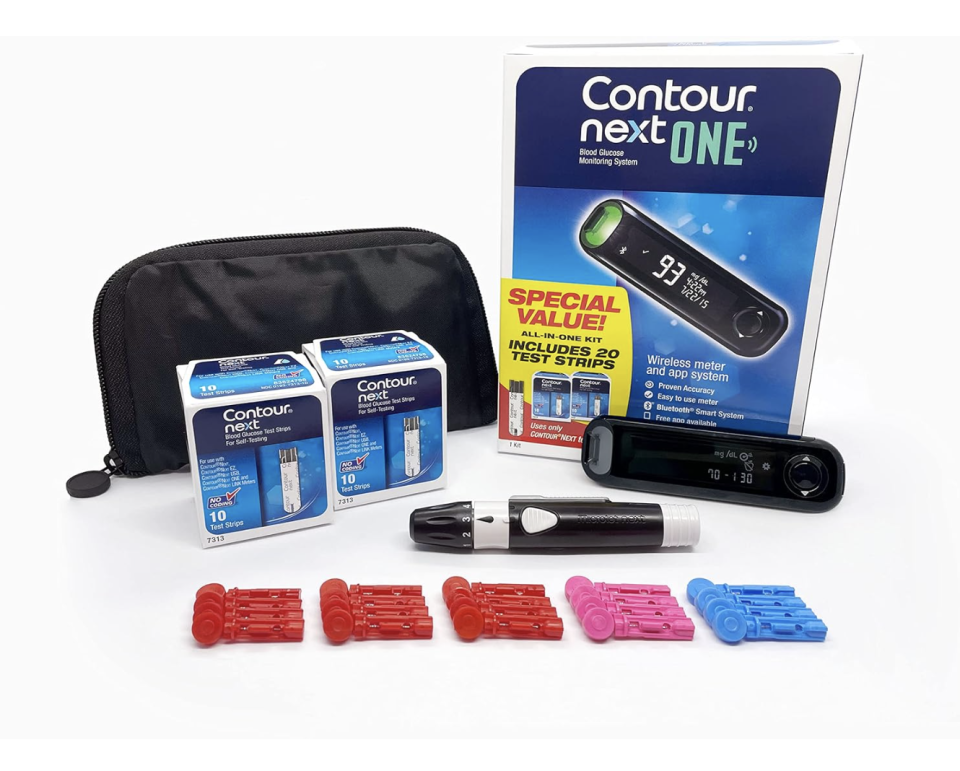
Contour Next One
amazon.com
Ascensia Diabetes CareAccu-Chek Guide
This was another finger-stick glucometer recommended by Dr. Wyne because it serves up quick and accurate results. Patients who've used it before like how large the numbers are on the display screen, and how easy the accompanying smartphone app is to use. One helpful feature is that the lancing device has 11 customizable depths.
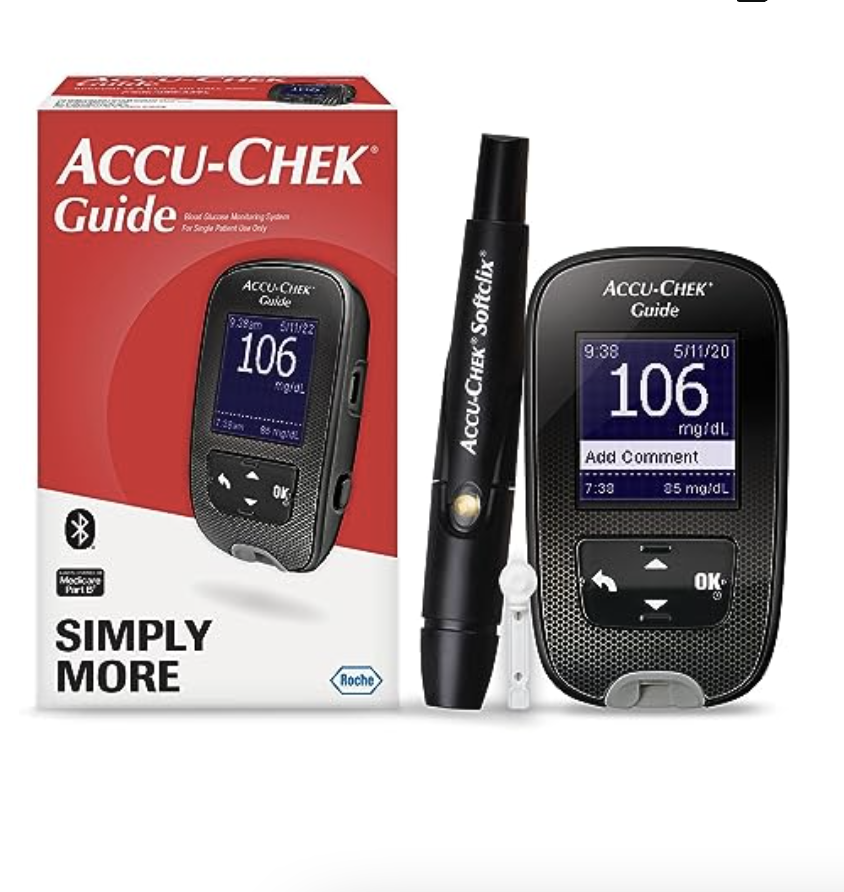
Accu-Chek Guide
amazon.com
Accu-ChekAir
When the cost of test strips prevents someone from properly keeping track of their blood sugar, Dr. Wyne recommends this glucometer because the strips tend to cost less than others. “Also, it has been shown in clinical trials to continue to be accurate when used frequently, which is not true for some of the other meters that have received FDA approval,” she says.
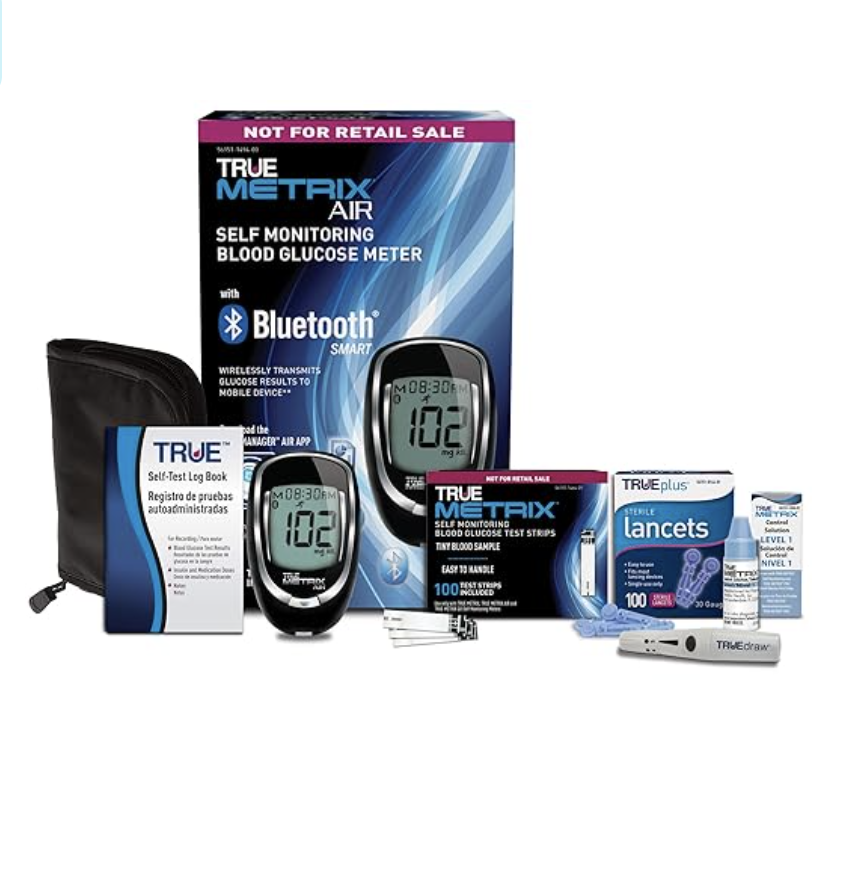
Air
amazon.com
Trividia HealthPOGO Automatic
Dr. Wyne notes that this glucometer is pretty discreet as far as finger-stick meters go. Everything you need for 10 readings fits inside the handheld device, so you don't have to worry about carrying a large case around or stopping what you're doing to assemble all your supplies before taking a reading.
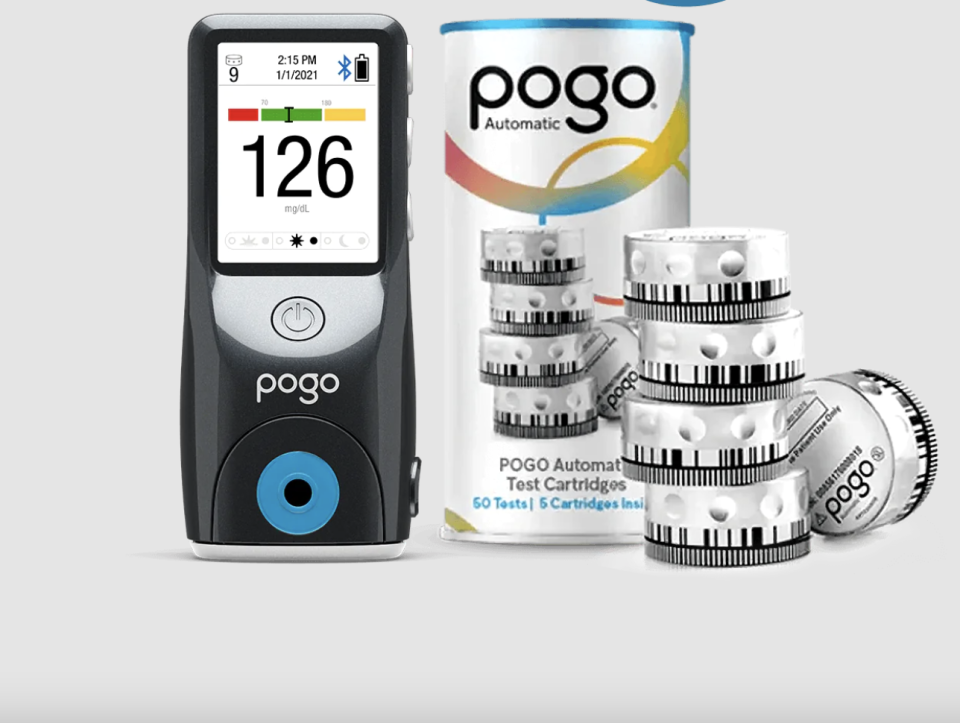
POGO Automatic
presspogo.com
Intuity MedicalEversense
Eversense is unique in that the sensor is inserted into your upper arm by a medical professional and kept there for up to 180 days (six months) so it can't be ordered online even with a prescription. A transmitter that sits on top of your skin sends readings from the embedded sensor to a smartphone app. Because it can be worn for so long before it needs to be replaced, Eversense really is ideal for people who want to “set it and forget it.”
Unfortunately, the device is very expensive without insurance, and insurance may not cover the cost of having it inserted twice a year. It's also worth noting that the device is only water-resistant for up to 30 minutes.

Eversense
ascensiadiabetes.com
What to consider
Because you’ll use a glucose meter all day, every day, it’s important to choose one that you’re happy with. Here are some things to think about before you purchase one:
What type of glucose meter is it? The classic glucometer requires people to prick their fingertip to get a small sample of blood to put on a test strip, which is analyzed by a glucose meter. This can become very painful, as people with diabetes usually need to check their blood sugar levels multiple times a day. Meanwhile, continuous glucose monitors (CGMs) are small devices that you attach to your body (such as on the upper arm) and they measure the glucose in interstitial fluid (not blood) every few minutes throughout the day. They’re worn for several days at a time, and provide many more readings than one could get with a finger-stick meter. “My recommendation is to go with whatever continuous glucose monitor is covered by the patient’s insurance company,” says Dr. Hong. “But most insurance companies will only cover a CGM if the patient requires insulin for their diabetes care.
How discreet is it? CGMs are relatively easy to hide under clothing, and they don’t require you to stop what you’re doing and go somewhere private to do finger-stick tests. However, if you end up with a finger-stick meter, keep in mind that some are smaller and have fewer parts to carry around than others.

Are at-home blood glucose meters accurate?
“The accuracy of the glucose meter has improved over the years but still has significant variability,” says Dr. Wyne. “The standards for approval of these devices allow for a certain amount of variability between readings, as compared to the lab device that was the reference standard for the trials. This means that a reading can vary between meters by up to 20 to 40 points, depending on whether the glucose is low, high or close to range.” She says the best thing you can do is stick to one brand of glucose meter, pay attention to your body, and figure out at what number you typically begin to experience any symptoms of hypoglycemia. Then, learn to treat those symptoms. For instance, if you have symptoms and one meter brand says 59 while another says 75, your symptoms are real — don’t just shrug them off.

Do you need a prescription for a glucose meter?
At the moment, you only need a prescription for continuous glucose monitors (those that remain attached to your body and repeatedly measure your blood sugar throughout the day), but you don’t need a prescription for non-continuous glucose monitors (such as those that require you to prick your finger every time you want a reading). However, this is all changing soon! “The FDA recently approved the first over-the-counter continuous glucose monitor, called the Dexcom Stelo Glucose Biosensor System,” says Dr. Hong. “This is designed for adults who do not use insulin. At this point, I don’t know what the cost will be. This is an exciting development as it will likely make continuous glucose monitors more accessible to all patients.”

Can a smartwatch monitor blood sugar?
While some smartwatches may claim to take accurate blood sugar readings, they shouldn’t be trusted, especially if a person has diabetes. That’s because blood glucose meters must be approved by the Food and Drug Administration (FDA), and there currently are no smartwatches with official FDA approval. “What many people do not know is that the FDA does not just look at the initial submission to determine if the device is able to do what it claims to do, but also it monitors the quality of manufacturing for ongoing oversight,” explains Dr. Wyne.

What is a normal blood sugar range?
If a person hasn’t had any food or beverages (aside from water) for eight hours, a blood glucose reading between 70 mg/dL and 100 mg/dL is considered to be normal, according to the World Health Organization. If a person has recently had something to eat or drink, a blood glucose reading of 200 mg/dL or higher indicates you have diabetes, according to the Centers for Disease Control and Prevention. However, it’s important to talk to your doctor to figure out what they think is normal for your body.

You Might Also Like

